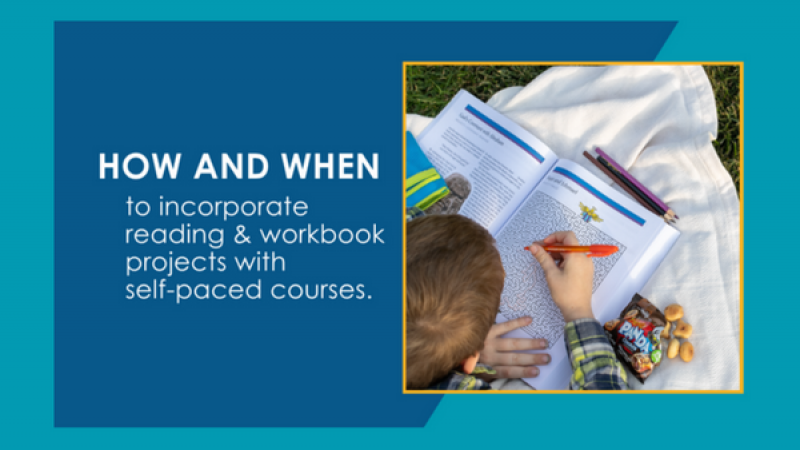How and when do you incorporate reading and projects with self-paced courses?

Ever wondered what it was like to be a spectator at the first Olympic games? Or a pilgrim living in Plymouth? Our self-paced history courses will have your children asking these same questions. We learned long ago that the best way to harness that curiosity and imagination is with great literature and hands-on projects.
The self-paced history courses cover 32 events on a weekly basis. Each card is five lessons, including a worksheet and test. Simple enough on its own, however, for a fully immersive course, you’ll want to include some historical literature and projects. But how do you fit it all in? The simple answer is, “it depends on your schedule.” Here are some ways to enjoy the self-paced history reading and projects.
Self-paced Historical Literature
Often families will purchase the course kit for self-paced history, not expecting a full load of books. You can find a schedule of when to read each book by logging into the self-paced course. On the right-hand side of the course page, there are two links for the historical literature, Level 1 and Level 2. (Here’s a helpful video for navigating your self-paced course page!) Level 1 books are recommended for grades 2 and 3, and level 2 books are recommended for grades 4 to 6. Reading the books in this order will correspond to the lessons being taught.
With a full schedule, it might be hard to find time to fit the reading in. For some families, morning time is often a quiet way to ease into school, either reading aloud as family storytime or quietly reading independently. For others, swapping out a couple of bedtime stories for some historical literature is an easy way to fit it in. Or, if you have multiple children and don’t have the time to sit down and read with one at a time, see if they are available as audiobooks to listen to in the car or while riding bikes.
Another great way to finish the reading and connect with your child is to record yourself reading the books and then having your child listen to them later. If time allows, it's a great way to stay in touch with what your child is reading so you can have meaningful conversations about it later.
Self-Paced History Projects
This year Veritas released a book of hands-on projects for self-paced courses. The projects are optional, of course, but they are a great way to make history come alive for your child. We suggest looking through the book and deciding ahead of time which projects your child will do each semester and scheduling it out. It’s so easy to push aside the optional fun things when you’re in the thick of school, but being intentional with your schedule will make a huge difference.
There is at least one project per card, so for homeschooling families, it’s possible to fit in one project per week. Ideally, the project would be done after the first lesson of the card and before the last lesson. If you’re using a university model or doing a co-op, we suggest doing lessons at home and using meeting times to do projects, sing memory songs and discuss the literature.
We know that homeschooling can be unexpected, so it’s always good to have a fun book or project in your back pocket when days just don’t go as planned. The bottom line is the projects and literature are meant to enhance the courses, not intimidate you. So have fun with it!






